Blurring the Lines of Opposition: Michael Field’s “Equal Love” a Critique of Love, Marriage, and Gender Conventions
© Arianna Guaragna, Ryerson University 2020
Historical Context
Introduction
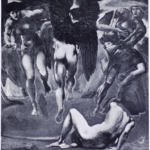
Evolving notions of gender, sexuality and patriarchy were hallmarks of the end of the nineteenth century. The fin-de-siècle engendered bodies of artwork, poetry, and literature that resisted traditional notions of gender and gender roles endorsed through antiquated Victorian morals. Shifts in thinking about gender roles were not exempted from the domestic realm—in fact, discourse on women’s refusal of conventional and systemic patriarchy was made possible by the New Woman’s literary identity (Shea and Whitla 9). Katherine Bradley and Edith Cooper repudiated the rigid structures of the heteropatriarchy through their subversive writing under the shared pseudonym of “Michael Field.” The ambivalence of the shared name was a political strategy resisting existing structures and allowing new spaces to be inhabited (Thain 15).
Michael Field’s play “Equal Love,” published in The Pageant 1896, challenges Victorian ideals of patriarchal values by rejecting “the idea that the ideal woman, the moral woman, was a submissive woman” (B. Griffin 48). Field achieves this by blurring gender oppositions through exposing and undermining the power imbalance within marital structures. Where the pursuit of a woman’s desires was considered “selfish” and “unwomanly,” especially within marriage (B. Griffin 47), Field uses female agency and license to underscore the essentiality of the changing notions of women and gender roles within marital relationships.
In understanding the gender politics of the authorial identity of Michael Field, it is possible to analyze Field’s work as a textual manifestation of the evolving notions of gender throughout the fin-de-siècle. The very core of nineteenth-century ideologies of domesticity and patriarchy are undermined through Field’s artistic artifice, which effectively blurs the lines between gender—suggesting that the antiquated nature of gender binaries and gender roles prohibit the union of men and women as equals.
The Literary Genius of Michael Field
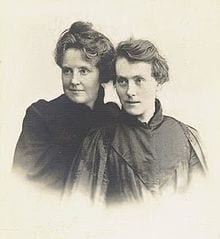
Michael Field
As life-long companions and lovers, Katherine Bradley and Edith Cooper, under the union of their joint signature, prided themselves as being “closer married” than the prominent Victorian couple, Elizabeth Barrett and Robert Browning (Works and Days 16). Thain describes “the quirks and eccentricities of Michael Field’s work…as manifestations of an exaggerated, or extreme, engagement with some of the most vital literary concerns of the age” (2). The authorial identity of Michael Field is a crucial topic of analysis, one that reveals Field to be “too interesting a part of fin-de-siècle aesthetics to remain on any horizon” (Thain 2).
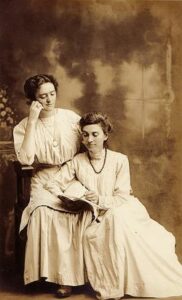
Field’s preoccupation with both Greek and Elizabethan pasts, cultivation of deliberate esotericism and commitment to challenging traditional notions of gender and sexual propriety mark their literary works with “the unmistakable imprint of Aestheticism” (Evangelista 2). Field’s literary genius is informed by their intentional blurring of oppositions, evident in their writing and their literary identity.
The use of a male pseudonym combining both their nicknames, “Michael” (Katherine) and “Field” (Edith), “yoked in marriage,” offers a unique expression of their co-authorship (R Griffin 197). The name Michael Field is a “bipartite” (Thain 4), illustrating the collaborative co-authorship and blurring the identities of Bradley and Cooper, respectively, as individuals. Robert J. Griffin describes the name Michael Field as “both a single, male name and, again, a doubled one, since both “Michael” and “Field” are strongly marked masculine names” (200). The use of two identifiably masculine names to subsume the identity of two female authors creates a paradox between genders while simultaneously creating an entirely separate identity. Understanding the importance of the pseudonym “Michael Field” is principal in understanding pseudonymity as “a subset of anonymity” (R Griffin 1). The complexity of the authorial identity of Michael Field offers a fundamental reflection of the literary works produced under their co-authorship, works that—like their identity—blur the lines of opposition of gender and gender identity.
The Victorian Patriarchy and the Marriage Issue
“Victorianism signifies the conventions and social expressions characteristic of either Victoria’s reign, or more generally, of her epoch” (Shea and Whitla 1). The institution of marriage was a fundamental part of Victorian society and vital in maintaining the dominant patriarchal values and morals. The advent of the New Woman discourse and feminist ideas of free union and marriage threatened the institution of marriage, resulting in its rigorous defence sustained by the belief that “without conventional marriage and domestic arrangements, the social fabric upon which Victorian society was based would begin to crumble” (Ledger 12).

Field’s portrayal of Emperor Justinian and Theodora in “Equal Love” presents marriage in a rather nuanced way. Traditionally, women were considered docile and submissive. In the words of Shea and Whitla, “women were often, like children, to be seen and admired, but not to be heard or counted as a presence” (8). Field does not make this the case in their depiction of the Emperor and Empress of Byzantine; instead, Justinian pridefully remarks, “One joy remained / In store for me—to make you fellow-ruler / With me of half the world” (Field 202). Theodora is depicted as a strong and admirable woman; her position as Empress further legitimizes her importance and high esteem; her husband contends, “It is [his] glory to invest [her] with, / Find in [his] faith fresh splendour, further scope / For adoration” (Field 202). Field’s depiction of Theodora is intentional; she embodies the essence of the New Woman in such a way that sets up the play as esoteric in its critique of marriage.
The New Woman
The New Woman, “christened” in 1894 (Ledger 9), radicalized discourses on marriage, sexual propriety, domesticity and social roles. Freethinking feminists and the New Woman’s literary identity sought to cultivate a space for the debate of controversial topics such as free love unions, divorce, and “the need for women’s greater autonomy and independence within marriage” (Schwartz 785).
Despite the apparent enmity towards marriage expressed by the dominant discourse, early debates on the New Woman did not intentionally seek to undermine the institution of marriage but rather, address much-needed reform (Ledger 20). Ledger argues that “the collapse of Victorian domestic ideology” can be attributed to its attempt to maintain that “household harmony [is] compatible with male authority in the home” (38). Ledger expresses that this idea perpetuated the mistaken assumption that men are always capable of using their domestic authority wisely and productively and that women were content in submission to their husbands’ commands (38).
Theodora
Discourse on the New Woman during the fin-de-siècle was rather heterogeneous—spanning from more medico-scientific discourse such as reproductive issues and the New Woman’s refusal of maternity to more fictional discourses focused on the New Woman’s “reputed sexual license” (Ledger 10). Field depicts Theodora as a rather paradoxical character—she is both loved and admired by her husband yet is described as having “many lovers” in her past (Field 191). Theodora does not occupy solely one depiction of a woman; she is neither the outcast prostitute nor the virgin bride of the Emperor, in essence, she exists outside the ideal conventions of her gender.
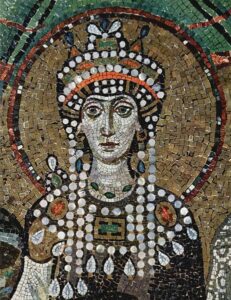
Field’s depiction of Theodora as a former prostitute is vital in analyzing her character as both having agency and representing the fictional idea of the New Woman. Prostitutes in Victorian England both undermined patriarchal ideals and religious ideas of purity. Shea and Whitla describes the Victorian patriarchy as “particularly entrenched in the church” (9), elucidating the relationship between how prostitutes would be received by society concerning Christian ideals of female purity and sexual propriety. Walkowitz describes prostitution in Victorian Britain as “a trade largely organized by woman rather than men,” (25) thus calling attention to how the occupation of a prostitute “may have afforded poor women a certain degree of autonomy, but it did not liberate them from a life of poverty and insecurity” (Walkowitz 21). Theodora contradicts this description of the common Victorian prostitute as she rises up to occupy a position of power and significance as the wife of the Emperor of Byzantine despite her past. Theodora also earns her husband’s worship despite not having met as “virgin souls” (Field 196). Field once again blurs the lines of opposition in depicting Theodora as both sides of the dichotomy, thereby undermining the ‘ideal’ Victorian woman’s rigid ideas.
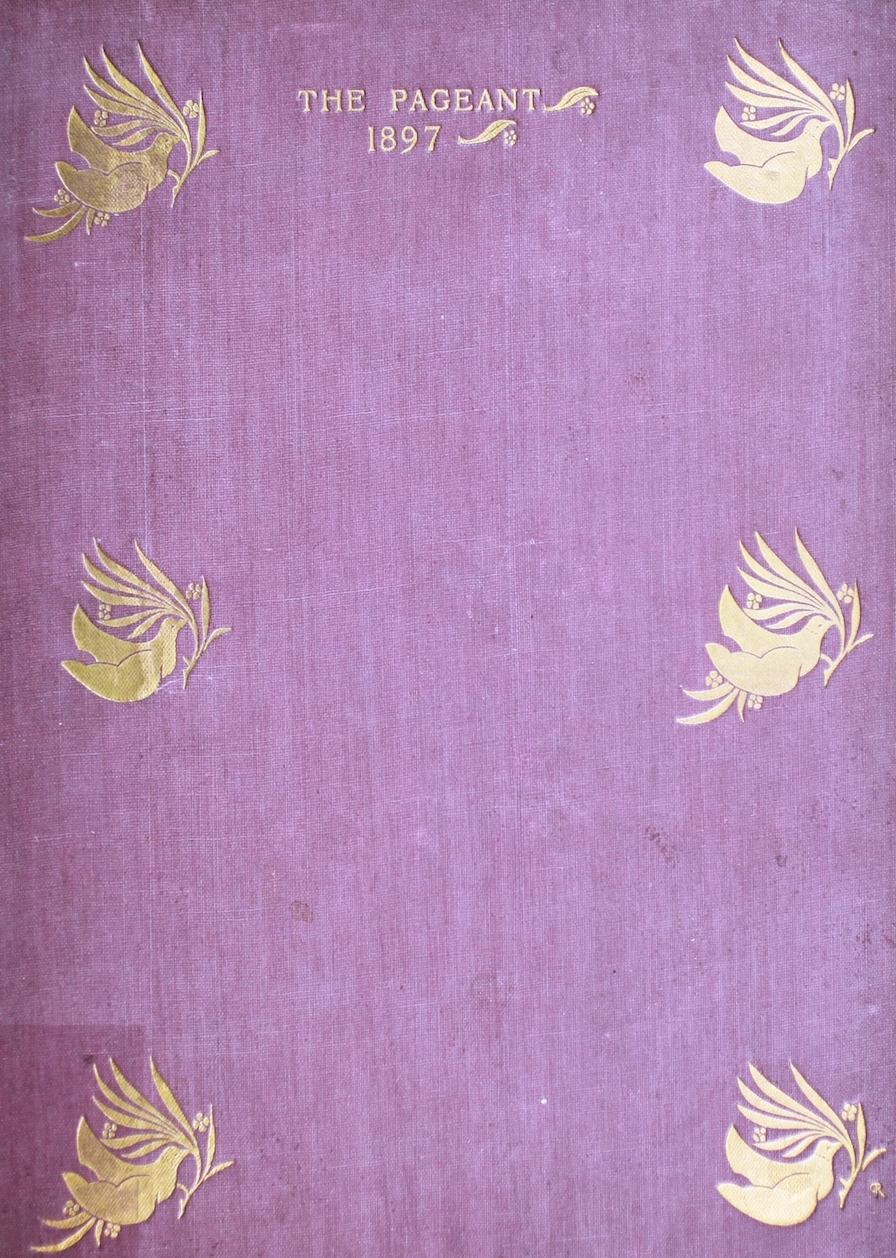
The Victorian domestic ideology functioned to preserve household unity through women’s complete subordination to their husbands—the male authority would otherwise be in jeopardy if a more democratic decision-making model were deployed (B. Griffin 45). The rigid structure of the Victorian domestic sphere ensured that unhappiness within the home would be avoided; the source of this unhappiness stemming not from a wife disagreeing with her husband, but the fact that the wife would even consider having an opinion that contradicts that of her husband’s (B. Griffin 48). The most radical element of “Equal Love” is the agency Theodora exercises within her marriage with Justinian. The Emperor presents his wife with an ultimatum—to have her illegitimate child killed or remain married to him—while this requisition is extreme, it presents Theodora with a choice, something women of Victorian society were not given. Justinian remarks, “The Empress shall determine if your life / Is for her honour and our empire’s peace. / Theodora, you are judge of this” (Field 207). In Theodora’s decision to kill Zuhair herself, she not only defies her maternal obligations to her son, but she actively chooses her fate within her marriage.
Meaning of “Equal Love”
Field challenges the very essence of nineteenth-century domestic ideology through their depiction of Theodora as the literary New Woman—an empowered and autonomous female figure.
The core of nineteenth-century domestic ideology was the internal logic that reconciled male authority with the ideal of marital unity—a feature ignored by historical analysis which posits a sharp dichotomy between authoritarian and companionate models of marriage. The idea of unity referred not to a partnership of equals but to a couple united under one will—that of the husband (Ledger 46).
Field actively works against the idea of marital unity being united under the will of the husband (Ledger 46) through their subversive writing—not only by depicting Theodora as a woman capable of choice within marriage but also by depicting Justinian as a man willing to offer his wife the ability to choose. In concluding “Equal Love” with Theodora committing filicide, Field radicalizes both Theodora and Justinian’s characters, respectively. The concluding line of the drama, “My empire’s strength — ours is an equal love” (Field 224), spoken by the Emperor to his wife, consummates Field’s political subversion.
Conclusion
The complex authorial identity of Michael Field offers an essential basis for analysis for their work, and more importantly, the criticism embedded within Field’s writing. The usage of a male pseudonym allows Katherine Bradley and Edith Cooper to transcend conventional gender identity by blurring the lines of gendered binaries. Within “Equal Love,” Field blurs the lines of opposition in their depiction of Theodora as both a former prostitute and an Empress and as both a wife to Justinian and a woman of agency and autonomy. Theodora actively defies the conventions of the ideal Victorian woman, possessing qualities incongruent with her gender, most notably her agency within her marriage. The idea of marital union is challenged by Field, who revokes the conventional ideals of marriage in their very existence as two female lovers united by their shared authorial identity. Under a shared pseudonym, Katherine Bradley and Edith Cooper “were designed and bound together by a strap to form one complete work” (Thain 7). The precocious depiction of marriage in “Equal Love” reflects, artfully, the possibility of marriage between two equals, an idea that is urgently and poetically articulated through their subtle but powerful writing.
Works Cited
Field, Michael. “Equal Love.” The Pageant 1896, Henry & Co., 1895, pp. 189-224. Yellow Nineties 2.0, https://archive.org/stream/Pageant1896_201609/Pageant1896#page/n207/mode/2up.
Secondary Sources:
Evangelista, Stefano. “Michael Field (Katharine Bradley, 1846-1914; and Edith Cooper, 1862-1913),” Y90s Biographies, edited by Dennis Denisoff, 2015. Yellow Nineties 2.0, General Editor Lorraine Janzen Kooistra, Ryerson University Centre for Digital Humanities, 2019, https://1890s.ca/field_bio/.
Griffin, Ben. The Politics of Gender in Victorian Britain: Masculinity, Political Culture and the Struggle for Women’s Rights. Cambridge University Press, 2012.
Griffin, Robert J., editor, Faces of Anonymity: Anonymous and Pseudonymous Publication from the Sixteenth to the Twentieth Century. Palgrave Macmillan, 2003.
Ledger, Sally. The New Woman: Fiction and Feminism at the Fin de Siècle. Manchester University Press,1997.
Thain, Marion. “Introduction: ‘something fierce, subtle, strange, singular’.” ‘Michael Field’ : Poetry, Aestheticism and the Fin de Siècle, Cambridge University Press, 2007, pp. 1-19.
Schwartz, Laura. “Freethought, Free Love and Feminism: Secularist Debates on Marriage and Sexual Morality, England c. 1850–1885.” Women’s History Review, vol. 19, no. 5, 2010, pp. 775–793, doi:10.1080/09612025.2010.509162.
Shea Victor, and William Whitla, editors. “Introduction.” Victorian Literature: An Anthology, John Wiley & Sons, Ltd., 2015, pp. 1-17.
Walkowitz, Judith R., Prostitution and Victorian Society: Women, Class, and the State. Cambridge University Press, 1980.
Works and Days, from the Journal of Michael Field . Ed. T. & D. C. Sturge Moore. London: John Murray, 1933.
